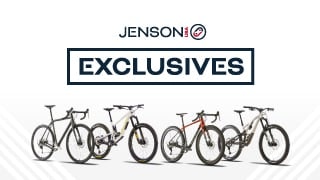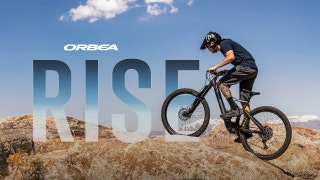Featured Brands
Recommended Products
Get free shipping, on most items, with your $50 purchase today! Same day shipping on most orders if placed by 3pm PST.
PLEASE NOTE:
This offer is only available to physical shipping addresses in the 48 continental United States (no PO Boxes), and some exclusions apply.
Oversize Charges
Some large and/or heavy items are subject to additional oversize charges that are separate from standard shipping costs.
Bike Build Process
All bikes are built, tested, tuned, and ready to ride upon shipment. The bike build process typically takes 2-3 days to complete depending on the bike model and the complexity of the build.
Stock Status
Orders for in-stock items placed by 3PM PST usually ship on the same day. Orders that include special-order or backordered items may be subject to shipping delays depending on product availability. Refer to estimated delivery times in cart when selecting shipping options.

Our Gear Advisors are Ready to Help.
Tucked into the bottom section of your frameset, right where the seat tube, down tube and chainstays meet between your spinning cranks, is the bottom bracket, a vital component that connects the crankset to the frame. Consisting of bearings and a spindle (which is often integrated with the crankset), it fits into a small frame tube called the bottom bracket shell and allows your cranks to spin.
There are many different types of bottom bracket standards, with various interfaces and spindles, but regardless of which style you choose, some of the key performance factors to consider are durability, stiffness and weight. Quality bearings help minimize drag, so your cranks can turn easily with minimal resistance.
You might not think about the bottom bracket often, but it’s a component that can wear out over time. You will know it’s time for service, or perhaps a replacement, if you feel any play or resistance when spinning the cranks, or hear creaking noises while pedaling. When you are shopping for a new bottom bracket, the first thing you need to consider is compatibility. If you are building up a new bike, you will need to know if the frame has a threaded or press-fit bottom bracket shell, and also the width of the shell. If you are replacing a current bottom bracket, you also need to consider the spindle and crank interface.
If your BB shell is threaded, you will most likely be looking for a conventional threaded bottom bracket with external bearings. This design allows for wider spindles and increased stiffness. Older model road and mountain bikes have square taper spindles, but the more common standard among performance bikes today is a splined interface with the crank. Most modern cranksets have the BB spindle integrated into the driveside crankarm. Shimano calls this design Hollowtech II, and other brands have their own names for it. RaceFace X-type and FAS MegaExo are two common examples.
If your bike is designed for a press fit bottom bracket, you have a number of sizes and standards to choose from. These include BB90/BB95 used in Trek road and mountain bikes; PF86/92 used by Giant, Scott, Pivot and many others for road and mountain bikes; and the BB30 standard popularized by Cannondale. The numbers refer to the width of the BB shell, and typically mountain bikes are wider.
JensonUSA carries all these options, with a wide variety of product choices from top brands such as Shimano, SRAM, Chris King, FSA and Race Face. If you have any questions about bottom brackets, call one of our expert Gear Advisors today at 951-234-7554. They’ll be happy to help you find the perfect part.




